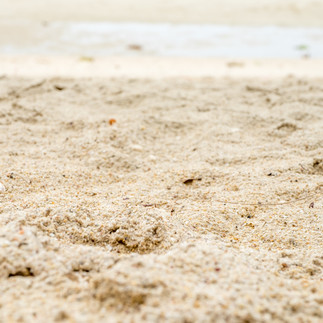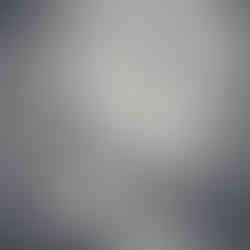Exercise 5: Research and development
- Christine Griever

- Sep 27
- 6 min read
Firstly, review your visual ideas based on from the previous exercise through a process of critical evaluation. Which ideas are you drawn to? Which ideas have ‘legs’ – possible interesting outcomes which are worth pursuing? Often the ideas which are strongest are those which have depth, or many layers of association. Perhaps you are intuitively drawn to a particular idea. Select a few ideas you would like to push further. Use your learning log to record your thoughts.
Now, do you need to undertake any research to help move your selected ideas on? The form your research will take depends on the individual elements of your idea. Find source material that helps informs your ideas. For example, by doing objective drawings or taking photographs, to understand your subject better, and to consider aspects of composition. You can use both primary and secondary sources of research in this way. Research feeds into the development of your visual work, informing and advancing your ideas. Document this phase of the work accordingly.
The developing your ideas stage is about building on your initial ideas by reworking them, adding the visual or other insights gathered through your research, and testing out different versions or possibilities. Spend 45 minutes developing the possibilities of one of your ideas. How many different ways can you visualise this?
If you want to develop a broader range of ideas, then repeat the previous exercise to generate more possibilities, potentially using a different phrase as a starting point. Use your learning log to document this process of review, research and development.
Visualising your ideas is the culmination of all your preliminary work in which you work up some more developed visual sketches and ideas. This artwork can be hand-drawn illustrations, photographs, and/or include typography. The presentation can be a little rough around the edges but should show the main elements of your designs. Select the strongest variation of your ideas from the previous research and development exercise to start exploring how you can visualise them within a mock-up.
Use your learning log to document these research and development stages, and to reflect on the process and your results.
Review
From the previous exercise, I was most drawn to these images that I created from my thumbnails. I decided to develop my research and ideas for the third and fourth images.
Moodboard - Masks
When I began to research new ideas for my masks, I discovered that they mainly represented a metaphor for being happy on the inside while hiding one's true self behind a mask. This led me to think about the concept of having a dual identity to conform to social norms. After completing my previous work on gender-based violence, I decided to shift my focus in the mask research toward cultural decoration, examining masks from around the world. I delved into African, Mexican and Japanese masks, many of which are vibrant and visually striking. It was refreshing to adopt a more positive tone in my research.
In South Africa, different tribes paint their faces for celebrations and sometimes for mourning, with each design carrying its own cultural significance. This is an area I would love to explore in greater depth if another opportunity arises. However, I felt somewhat stuck when trying to connect this exploration back to the idea that "you can't judge a book by its cover."
Please click here to see more.

Brainstorming - Masks

Moodboard - Footprints
Researching my thumbnail related to footprints took me in various directions while searching for images online. Initially, I focused on images featuring footprints in different settings, such as sand, snow, mud and even prehistoric environments, including rocks and fossils. I then shifted my attention away from human footprints and started exploring animal prints. This proved to be interesting due to the diversity of animal prints. The visual research led me to think about types of footwear, such as trainers, sandals and boots. Towards the end, my research inspired me to look for clever metaphorical images. I felt that I could experiment more with thumbnails for this section compared to the masks I explored earlier.
Click on the link to see more.

Brainstorming - footprints

Developing my ideas
From my research, I decided to focus on footprints. I like how I could combine animal and human footprints to produce an image that relates to the quote "You can't judge a book by its cover" I sketched some thumbnails in my sketch book and I came up with more metaphorical type sketches.
I experimented with humans and animals. I took a giraffe because of its long legs and put on human footwear, in this sketch, wellies. I decided to push the image further by using the rain to wash off the giraffe print, resulting in the prints falling off the giraffe's leg, while the leg in the wellie stayed dry and the giraffe retained his prints! I liked the play on not judging a book by its cover because you wouldn't expect to have a giraffe in wellies, but also not for his prints to wash off in the rain.

Visualising my idea
I wanted a more polished look for my idea and I downloaded stock photos, to try and produce a collage type look with my idea.
Fig. 1 Adult rain boots (2025) Fig. 2 African Giraffe (2025) Fig. 3 Beautiful rose petals on white background (2025)
Fig. 4 Close up beach sand (2025) Fig. 5 Field of costal sea grasses (2025) Fig. 6 Rainy day (2025)
I then used Adobe Illustrator to manipulate the image the giraffe's leg so I could place the leg into the Wellington boot. I used rose petals because they looked more like a giraffe print lying on the floor, and it was the effect I was looking for, it started looking more like a cartoon. I quite liked this look because the whole idea was to bring in the fun!

In Adobe Photoshop I adjusted the colours of the rose petals to look more brown instead of red and then transferred this back into Adobe Illustrator.

I then created the image and saved it as a PNG so I could change the backgrounds.

I then opened Photoshop and started to experiment with the different backgrounds for my giraffe in a Wellington boot. Below are the different backgrounds I used.
It was quite funny to see how different the image looked with a very different backgrounds. I feel like the sand background was good because the water from the beach would have washed off the giraffe print. I didn't like the long grass background because it looked too fake. I loved the city background the best because I liked the grey contrast with the cartoon-like legs.
I felt I needed to emphasise the legs a bit more, so I played around with the Photoshop filters. I eventually settled on the poster edges filter.

The image reminded me of the children's books Charlie and Lola, illustrated by Lauren Child. By accident, I managed to use a collage background effect and a more cartoon effect on the legs. This wasn't where I was going with this image but I like how it's turned out!
Instead of stopping there I wanted to play with other filters in Photoshop. It's been a while since I've used the program and I think the experimenting was trying to remember how everything worked again.

After a lot of playing, I settled on these two images. I liked my original image, but it was good to see how different it can look when playing around with effects, colours, and filters in Photoshop.
Before and after
I felt I had spent a long time on this exercise and probably could have experimented further. However, I was wondering what the before and after looked. How the idea was born to the finished image later.
Starting with animal footprints left by a human. Then a giraffe wearing human boots. To a giraffe wearing human boots but not expecting his prints to wash off in the rain.

Then finishing off the image with collage/cartoon effect in Adobe Photoshop.
Reflection
"Don't judge a book by its cover." In this exercise, I felt I could throw the rulebook out the window. Does the giraffe have to be in the Savannah? Not mine, it's in the city, wearing a Wellington boot, and the rain has made some of its print wash off.
I learnt that one idea can be developed and the outcomes are not always what you expect. I was even more surprised when I looked at my original sketch and how it evolved into the finished image. I learnt so much from the process of brainstorming, moodboarding and then trying out different ideas. It was quite freeing to simply explore without worrying if the sketches were accurate. By sketching and writing down ideas, I could eliminate those that weren't going to work. This process was also beneficial for gathering ideas, as something that might not work for this project could inspire another project.
References
Bibliography - Research and development
Images
Fig. 1 Pixelsquid360. (2025) Adult Rain Boots. [Image] At: https://elements.envato.com/adult-rain-boots-9MHG66
Fig. 2 Pixelsquid360 (2025) African Giraffe. [Image] At: https://elements.envato.com/african-giraffe-ZNH3MNE
Fig. 3 Sommai (2025) Beautiful rose petals on white background. [Photograph] At: https://elements.envato.com/beautiful-rose-petals-on-a-white-background-T2GRWBD
Fig. 4 Weedezign_photo (2025) Close up beach sand texture background in perspective view, Summer holiday. [Photograph] At: https://elements.envato.com/close-up-beach-sand-texture-background-in-perspect-WDDFSJZ
Fig. 5 Mint Images (2025) Field of costal sea grasses. [Photograph] At: https://elements.envato.com/field-of-coastal-sea-grasses-8Z4CUEN
Fig. 6 Chalabala (2025) Rainy Day, Reflection of the building in puddle on the city street during rain. [Photograph] At: https://elements.envato.com/rainy-day-reflection-of-the-building-in-puddle-on--E66UH79
Fig. 7 Wallow (2025) Rain transparent photo overlays rain photo effects. [Graphic] At: https://elements.envato.com/rain-transparent-photo-overlays-rain-photo-effects-R7S6D3Z







































Comments